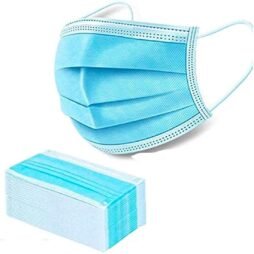A suction catheter, also known as a tracheal suction catheter or simply a suction tube, is a medical device used to remove secretions, mucus, and other substances from a patient’s airway, primarily in cases where the patient is unable to clear their airway independently. These catheters are essential tools in respiratory care and are commonly used in healthcare settings such as hospitals, clinics, and home care environments. Here’s a description of a suction catheter:
Description of a Suction Catheter:
A suction catheter is a flexible and sterile tube typically made from medical-grade materials like PVC (polyvinyl chloride) or silicone. It is designed for safe and effective airway clearance. Key components and features of a suction catheter include:
- Catheter Tube: The central part of the suction catheter is a long, slender tube with an open lumen running through its length. This lumen allows for the aspiration of secretions and mucus from the patient’s airway.
- Connector: At the proximal end (outside the body), there is a connector or hub that allows for the attachment of various components, such as a suction device or tubing. The hub is designed to ensure a secure and airtight connection.
- Distal End and Eyelets: The distal end of the catheter, which is inserted into the patient’s airway, typically has multiple small openings called eyelets or fenestrations. These openings are strategically placed to allow for the efficient removal of secretions while minimizing the risk of tissue damage.
- Markings: Many suction catheters have markings along their length, indicating the depth of insertion. These markings help healthcare providers ensure that the catheter is inserted to the appropriate depth within the airway.
How a Suction Catheter Works:
- Preparation: Before suctioning, the catheter is prepared, and sterile technique is maintained throughout the procedure to prevent infection.
- Insertion: The healthcare provider gently inserts the suction catheter through the patient’s nostril or tracheostomy tube until it reaches the desired depth within the airway.
- Suctioning: Negative pressure is applied through the catheter using a connected suction device. This creates a vacuum within the catheter’s lumen, allowing it to aspirate and remove secretions and mucus from the patient’s airway.
- Careful Removal: After suctioning, the catheter is carefully and slowly withdrawn while suctioning continues. This helps ensure that any remaining secretions are effectively removed.
- Monitoring: Throughout the procedure, the patient’s oxygen levels, heart rate, and other vital signs are monitored to detect any signs of distress or oxygen desaturation.
- Cleaning and Disposal: Once suctioning is complete, the catheter is disposed of in accordance with infection control guidelines or cleaned and sterilized if it is designed for multiple uses.
Applications:
Suction catheters are used in various clinical scenarios, including:
- Respiratory Care: Clearing the airway of patients who have difficulty coughing up or expectorating secretions, often seen in individuals with conditions like respiratory infections, chronic obstructive pulmonary disease (COPD), or neuromuscular disorders.
- Critical Care: Assisting patients on ventilators or in intensive care units (ICUs) who require ongoing airway clearance and secretion management.
- Tracheostomy Care: Maintaining the airway and suctioning secretions in patients with tracheostomy tubes.
- Home Care: Providing airway clearance and suctioning for individuals receiving care in a home healthcare setting.






